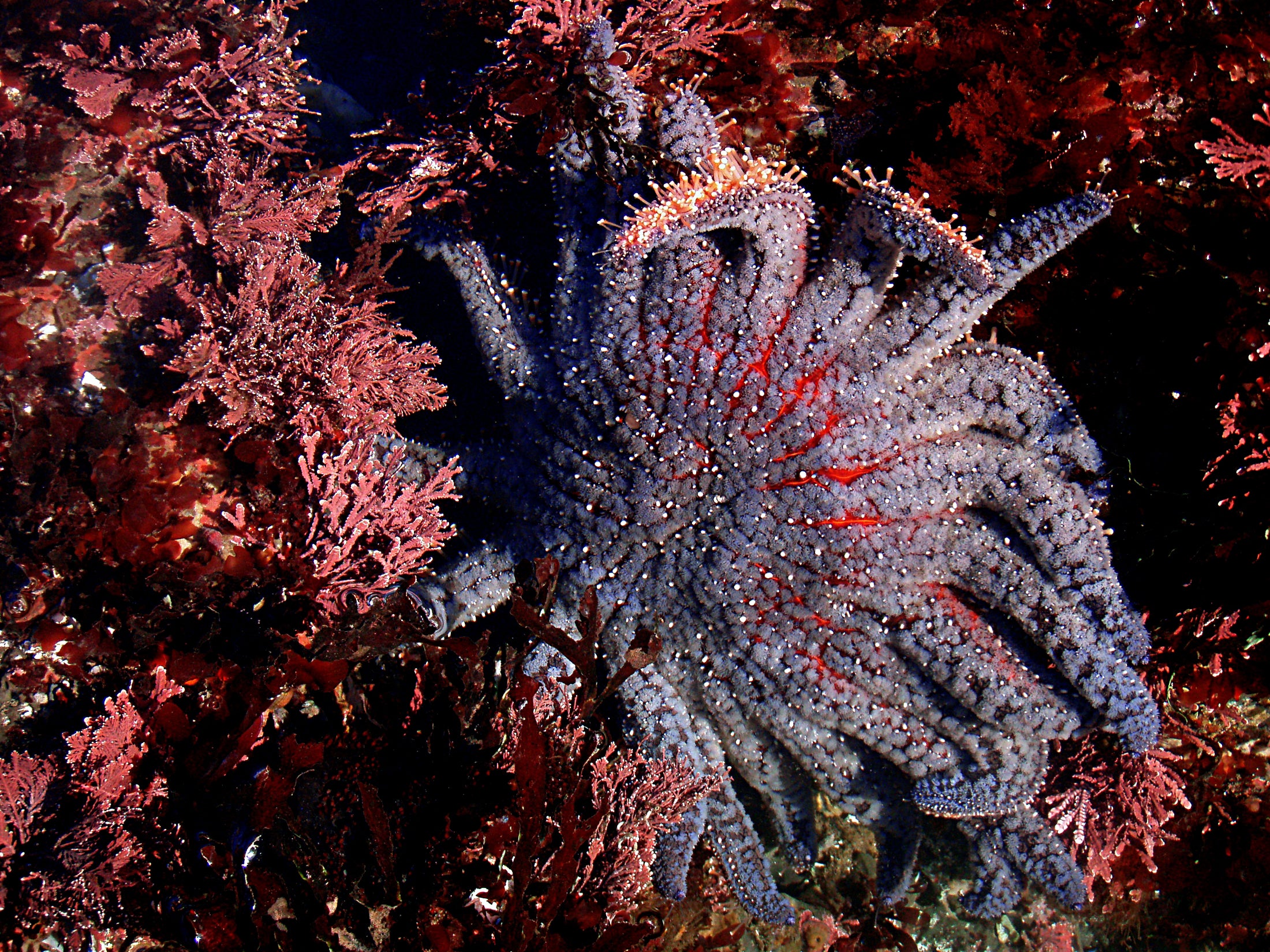Mass starfish death is biggest disease epidemic ever seen in marine animals, scientists say
Sunflower sea star hit by 'devastating' population decline which threatens biodiversity

Your support helps us to tell the story
From reproductive rights to climate change to Big Tech, The Independent is on the ground when the story is developing. Whether it's investigating the financials of Elon Musk's pro-Trump PAC or producing our latest documentary, 'The A Word', which shines a light on the American women fighting for reproductive rights, we know how important it is to parse out the facts from the messaging.
At such a critical moment in US history, we need reporters on the ground. Your donation allows us to keep sending journalists to speak to both sides of the story.
The Independent is trusted by Americans across the entire political spectrum. And unlike many other quality news outlets, we choose not to lock Americans out of our reporting and analysis with paywalls. We believe quality journalism should be available to everyone, paid for by those who can afford it.
Your support makes all the difference.Starfish along the US Pacific coast have been hit by the worst-ever disease outbreak seen in wild marine animals with one key species almost entirely wiped out, scientists say.
Sea star wasting disease has caused a “devastating” decline in the once-common sunflower sea star - Pycnopodia helianthoides - that is deemed important because it eats sea urchins which, left unchecked, can chew through swathes of kelp forests relied on by a host of other creatures.
Researchers identified warming temperatures and increased deaths during their survey of P helianthoides in a 3,000km stretch of coast from California to British Columbia.
Using data from divers and seabed trawls they found declines of up to 100 per cent in some areas, and said they feared the species may not recover.
Its near-total disappearance between 2013 and 2017 has already been linked with an increase in urchin population and reduction in kelp, threatening biodiversity, according to the study published in Science Advances.
In the paper, the scientists add: “Timing of peak declines in near-shore waters coincided with anomalously warm sea surface temperatures.
“Increasingly warm or anomalous temperatures are being shown to influence the prevalence and severity of marine infectious diseases ... [while] experimental and field studies support a role for temperature in sea star wasting disease morbidity.”
Animals affected by the disease, thought to be caused by a densovirus, develop white skin lesions before their arms fall off and they die.
Researchers quantified the collapse of P helianthoides by using data spanning 2004 to 2017.
The stars can reach up to one metre wide and have 24 arms.
Join our commenting forum
Join thought-provoking conversations, follow other Independent readers and see their replies
Comments